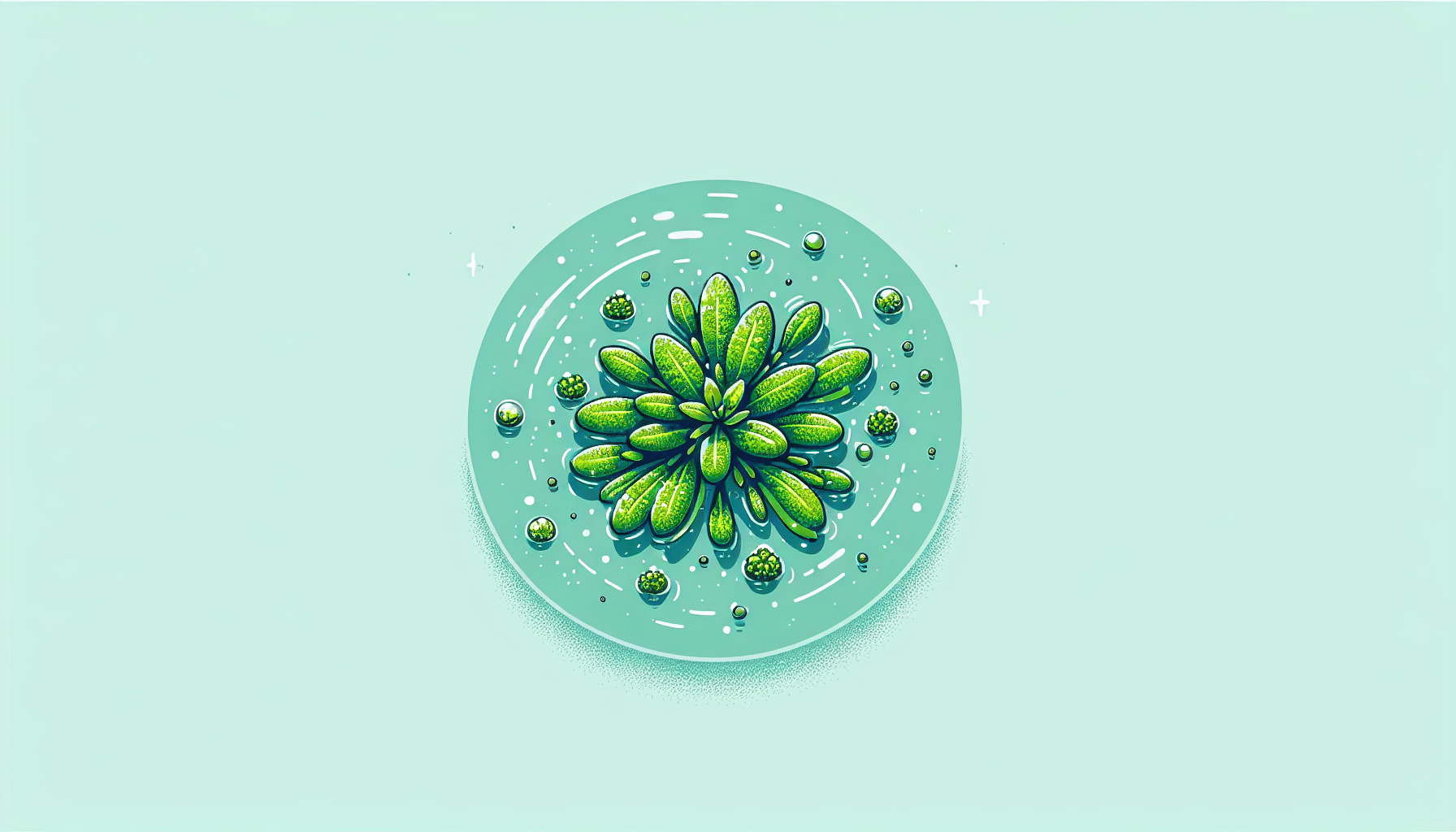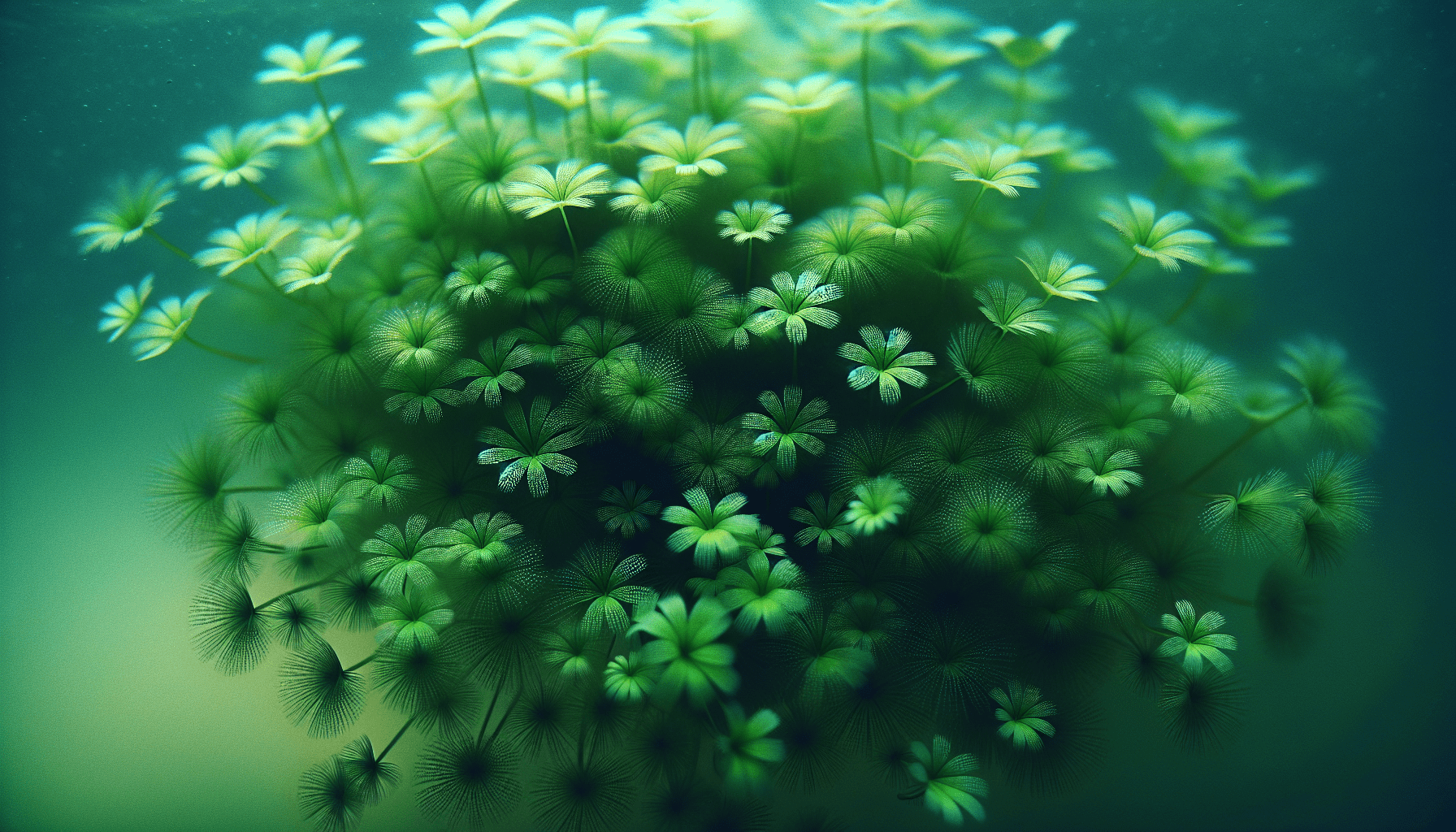Embarking upon a journey through the diverse terrains of aquatic flora, the focus of your exploration today is on understanding the intriguing life and relevance of the world’s smallest flowering plant- the Watermeal. This write-up will offer finely detailed coverage of this diminutive plant’s physiology, habitat, distribution, and its significance in a plethora of ecosystems, providing you a refined perspective on its ecological importance. Picture yourself traversing the vast expanse of aquatic biomes as you acquaint yourself with this fascinating spectacle of nature, the watermeal.

Definition of Watermeal
Watermeal is a distinctive aquatic plant recognized as the smallest of all flowering plants. This remarkable plant belongs to the genus Wolffia, often referred to as “water lentils”. Watermeal showcases other impressive characteristics such as its ability to rapidly cover an entire water surface due to its rapid growth rate. Its unique attributes, whether it is its small size or its flowering capability, enables its identification among other aquatic plants.
Scientific classification
In scientific classification, Watermeal falls under the family Lemnaceae, which hosts numerous types of duckweeds and free-floating aquatic plants. The genus Wolffia, in which Watermeal resides, includes 11 specific species. Watermeal species, with their different genetic qualities, tend can be found across the globe.
General characteristics
Watermeal plants lack roots and stems, differentiating them from other aquatic flora. This plant, measuring less than one millimeter across, exhibits a simple structure. Its tiny size is a characteristic hallmark that makes Watermeal stand out. This rootless entity boasts a morphology that assists in floating on the water surface, hence gaining its nutrients from the water.
Habitat of Watermeal
Watermeal thrives in aquatic habitats. It primarily opts for still or slow-moving waters, such as ponds, lakes, marshes, and slow streams.
Native regions
Watermeal’s native region is scattered globally, spanning across every continent. Some species of Wolffia are found more frequently within certain locations than others.
Preferred water conditions
Watermeal frequently blooms in water bodies with high nutrient content, especially the ones rich in nitrogen and phosphorus. It prefers calm waters with minimal water flow and turbulence, where it can float on the surface without disruption.
Geographical spread
From its native regions, Watermeal has now spread challenge almost every region around the world, through both natural displacement and human activities.
Physical Description of Watermeal
Watermeal, the smallest flowering plant, exhibits unique physical traits.
Size and shape
Each individual watermeal plant measures approximately 0.3mm to 1mm in length and has a round or oval shape, referring to its comparison to lentils.
Color
The color of Watermeal fluctuates between green to a slightly yellowish tint. However, in unfavorable conditions, such as poor nutrients or low light, it may turn to a reddish or brownish hue.
Growth tendencies
Watermeal has an exceedingly rapid growth rate. Given optimal conditions, it can double its population in just a few days. It also possesses a floating nature, allowing it to cover an entire water surface in a short span of time.

Lifecycle of Watermeal
Watermeal’s life cycle is critical in understanding its growth and ecological role.
Growth rate
Watermeal possesses one of the fastest growth rates among aquatic plants, often doubling in population within 48 hours under favorable conditions.
Maturity and reproduction
Watermeal reaches maturity in just a few days. Its reproduction is primarily carried out through multiple modes of asexual reproduction. Nevertheless, this diminutive plant is capable of sexual reproduction, producing the world’s smallest fruit.
Seasonal changes
Seasonal changes see Watermeal adapt accordingly. During winter or dry seasons, as a survival mechanism, watermeal transforms into a resistant form, assisting it to withstand unfavorable conditions, ready to flourish with the return of favorable conditions.
Ecological Role of Watermeal
Understanding the ecological role of Watermeal opens insights into its significance in the aquatic ecosystems.
Role in the aquatic ecosystem
Watermeal plays an instrumental role in nutrient cycling within the aquatic ecosystem. It absorbs excess nutrients from the water bodies and helps to maintain water quality. It can also act as a bio-indicator, displaying the health of a water body.
Food source for wildlife
Watermeal serves as a food source for various wildlife, primarily waterfowl. Its high protein content position it as a suitable dietary constituent.
Interactions with other aquatic plants
Watermeal, due to its growth tendencies, can dominate water surfaces, limiting light penetration to other submerged aquatic plants, essentially shaping the aquatic plant community.
Uses of Watermeal
Watermeal’s potential allows for various applications.
Use in traditional medicine
In some cultures, Watermeal has found its place in traditional medicine. It’s high protein and nutrient content oversee its use in nutritional supplements.
Potential for biofuel production
Given its rapid growth, Watermeal is being studied for potential use in biofuel production, a sustainable and renewable energy source.
Use as animal feed
Watermeal’s high protein content also opens the possibility for usage as animal feed, particularly for poultry and livestock.
Watermeal in Aquaculture and Aquaponics
Watermeal can be both a boon and bane in aquatic farming systems.
Impact on fish farming
In fish farming, overpopulation of Watermeal can hinder sunlight penetration, affecting both fish health and production yield. Moreover, it can interfere with feeding and harvesting processes, adding to the operational problems.
Use in aquaponics systems
In aquaponics systems, Watermeal can act as a natural water purifier, absorbing excess nutrients from the water. It can potentially be harnessed to boost the productivity of these systems.
Control methods within aquaculture
Control of Watermeal in aquaculture involves methods like physical removal, use of herbicides, or biological controls, such as introducing species that feed on Watermeal.
Potential Threats to Watermeal
As an aquatic plant, Watermeal faces multiple threats.
Environmental changes
Environmental changes like global warming, drought, or pollution can greatly affect Watermeal populations, influencing their growth and distribution.
Human activities
Human activities like water pollution, habitat destruction, or introduction of invasive species can pose significant threats to Watermeal populations.
Diseases and pests
Watermeal, like other plants, is prone to diseases and pests which can affect its health and growth.
Control and Management of Watermeal
Managing Watermeal overgrowth requires targeted strategies.
Physical removal techniques
Physical removal is a straightforward method, manually removing Watermeal from the water surface using nets or skimmers.
Chemical control methods
Chemical control involves the usage of specific herbicides that can target and eliminate Watermeal. However, this method must be applied cautiously to avoid potential harm to non-target species and the environment.
Biological control methods
Biological control, such as the introduction of Watermeal predators like ducks or specific fish species, is a more environmentally friendly approach.
Current Research on Watermeal
Recent research focuses on harnessing Watermeal’s potential while managing its growth.
Watermeal’s genetic properties
Academics are exploring Watermeal’s genetic properties, trying to understand its rapid growth rate and adaptability across various climates.
Research on potential uses as biofuel
Given Watermeal’s swift reproduction, research is focused on its potential conversion to biofuel, which is a valuable renewable power source.
Studies on Watermeal’s role in the ecosystem
Studies are also examining Watermeal’s interactions within aquatic ecosystems. This ranges from its role in sustaining wildlife to its implications for other aquatic plants.
In conclusion, the aquatic plant Watermeal exhibits fascinating traits, contributing its uniqueness within the plant kingdom. Its ecological roles, potential applications, and challenges provide excellent subjects for further exploration and research.